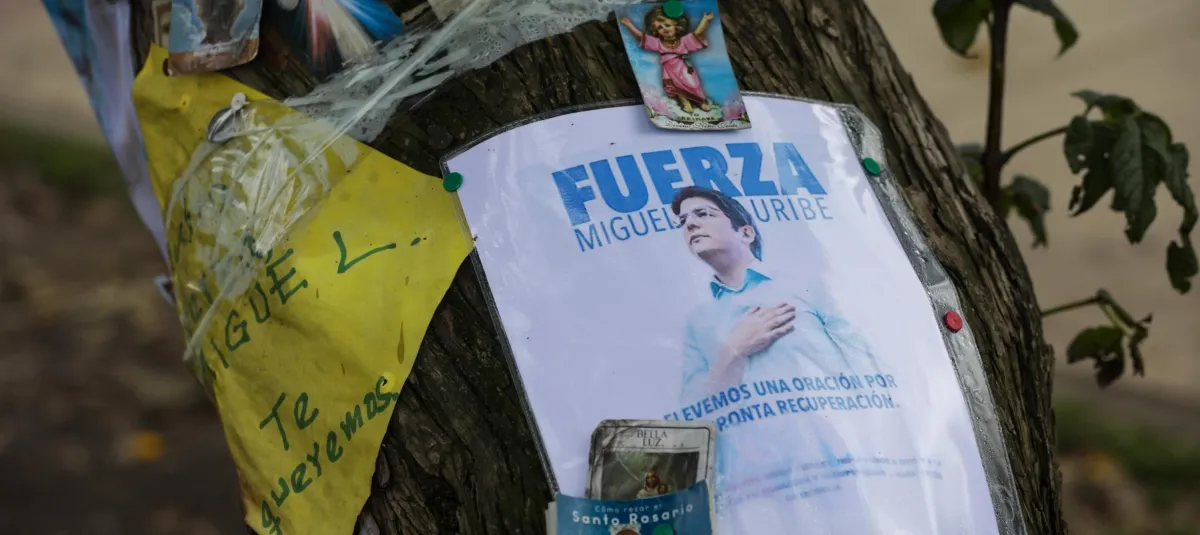Miguel Uribe's health: What does "hemodynamic stability" mean and other conditions detailed in the latest report?

The Santa Fe Foundation of Bogotá issued a new medical report on Thursday afternoon regarding the progress of Senator Miguel Uribe Turbay, who remains in the Intensive Care Unit (ICU) of the clinic following the recent attack. According to the statement signed by medical director Adolfo Llinás Volpe, the senator continues to receive multidisciplinary care and his condition remains serious, although his hemodynamic condition is stable.

Senator Miguel Uribe remains under mechanical ventilation and deep sedation. Photo: Cesar Melgarejo / El Tiempo
This type of stability, according to medical sources from the Mayo Clinic and MedlinePlus, refers to the control of the body's basic cardiovascular functions—such as blood pressure, heart rate, and circulating blood volume—that allow vital organs to continue functioning properly. In other words, although his prognosis remains guarded, the patient has reached a point where his heart and circulatory system are responding to treatment.
The medical report also indicates that Uribe Turbay remains on "permanent mechanical ventilatory support," meaning he requires the assistance of an artificial respirator to replace or supplement his breathing. This is typically prescribed when a patient cannot breathe on their own due to lung or central nervous system failure, or the effects of sedative medications.
The senator is also under "continuous sedation and neuromuscular relaxation," two measures commonly used in intensive care. Sedation allows the patient to remain unconscious and pain-free, which contributes to their clinical stability. Neuromuscular relaxation, on the other hand, is used to reduce physical strain on the body—especially during mechanical ventilation—and facilitate certain medical procedures. According to the Cleveland Clinic, this type of intervention is typically reserved for critically ill patients whose condition requires them to avoid any movement that could interfere with their treatment.

Miguel Uribe remains in the ICU after the attack under sedation and life support. Photo: César Melgarejo/El Tiempo
The medical report indicates that in recent days the senator has undergone "scheduled procedures" that have been key to maintaining his stability. Although the specific procedures are not detailed, it is known from information provided by his family and the clinic that he has undergone several surgeries.

Uribe Turbay remains in serious condition, but shows signs of stability in intensive care. Photo: Harvard University
Despite signs of stability, the Santa Fe Foundation warns that the senator's condition remains "serious" and that his "neurological prognosis is reserved," a medical term that implies that it is not yet possible to predict whether he will experience brain-related aftereffects or what his long-term recovery will be like. This is usually assessed progressively as the patient comes out of sedation and basic neurological responses are observed, such as the pupillary reflex, response to pain, and spontaneous breathing capacity.
The hospital said future updates on his clinical progress will be issued "in accordance with relevant clinical developments."
Environment and Health Journalist
eltiempo




%3Aformat(jpg)%3Aquality(99)%3Awatermark(f.elconfidencial.com%2Ffile%2Fbae%2Feea%2Ffde%2Fbaeeeafde1b3229287b0c008f7602058.png%2C0%2C275%2C1)%2Ff.elconfidencial.com%2Foriginal%2F607%2F26c%2Ffbe%2F60726cfbe31518364db8ed54216df268.jpg&w=1280&q=100)
